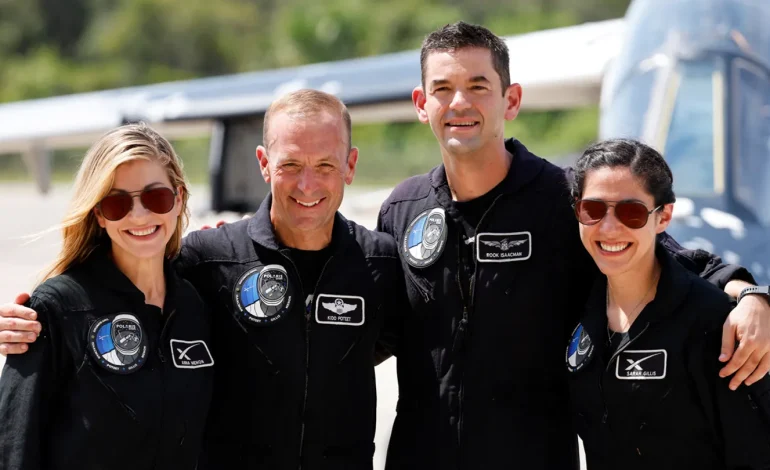SpaceX is set to conduct the first-ever private spacewalk next week as part of its ambitious Polaris Dawn mission, Fox News reports.
The operation will utilize innovative equipment, including sleek new spacesuits and a modified Crew Dragon craft designed without an airlock. The mission, led by billionaire entrepreneur Jared Isaacman, marks a significant milestone in private space exploration, according to the report.
The Polaris Dawn mission is scheduled for launch on Tuesday, with the crew expected to embark on a 20-minute spacewalk around 434 miles above Earth two days later. This elevation far exceeds previous private missions and is only matched by NASA astronaut activities aboard the International Space Station (ISS), located about 250 miles above the planet.
The five-day mission will follow an elliptical orbit, bringing the crew as close as 118 miles to Earth and extending as far as 870 miles, the furthest any humans have ventured since the conclusion of NASA’s Apollo program in 1972. Joining Isaacman on this historic flight are mission pilot Scott Poteet, a retired US Air Force lieutenant colonel, along with SpaceX engineers Sarah Gillis and Anna Menon.
Isaacman, the founder of the electronic payment company Shift4, has funded the mission, with expenses estimated to exceed $100 million.
“They’re pushing the envelope in multiple ways,” noted retired NASA astronaut Garrett Reisman.
He outlined the mission’s goal of testing new technologies in a high-radiation environment, which has not been experienced since the Apollo missions.
The custom Crew Dragon spacecraft has been modified to accommodate a unique hatch-opening process that enables it to dock in the vacuum of space, eliminating the need for a traditional airlock. During the mission, the crew will don SpaceX’s new, slimline spacesuits while the cabin is fully depressurized in preparation for the spacewalk.
Preparations will begin some 45 hours before the spacewalk, during which the cabin will be filled with pure oxygen to reduce any nitrogen content in the air. This critical step aims to prevent decompression sickness, or “the bends,” which can occur if nitrogen bubbles form in the bloodstream during rapid exposure to vacuum conditions.
The crew will utilize an ultrasound device to monitor bubble formation and undertake various scientific experiments during the mission. The research provides valuable insights into how astronauts might operate on the moon or other deep-space environments.
“It gives us a very unique opportunity to test these vehicles in an unprecedented environment,” said Emmanuel Urquieta, vice chair for aerospace medicine at the University of Central Florida.
While NASA missions are subject to stringent safety protocols, there are currently no established US regulations governing safety in private space missions like Polaris Dawn. SpaceX officials and the mission crew confirmed that extensive contingency plans have been developed to address potential emergencies, such as an oxygen leak or hatch failure, though they refrained from disclosing specific details.










The latest news in your social feeds
Subscribe to our social media platforms to stay tuned